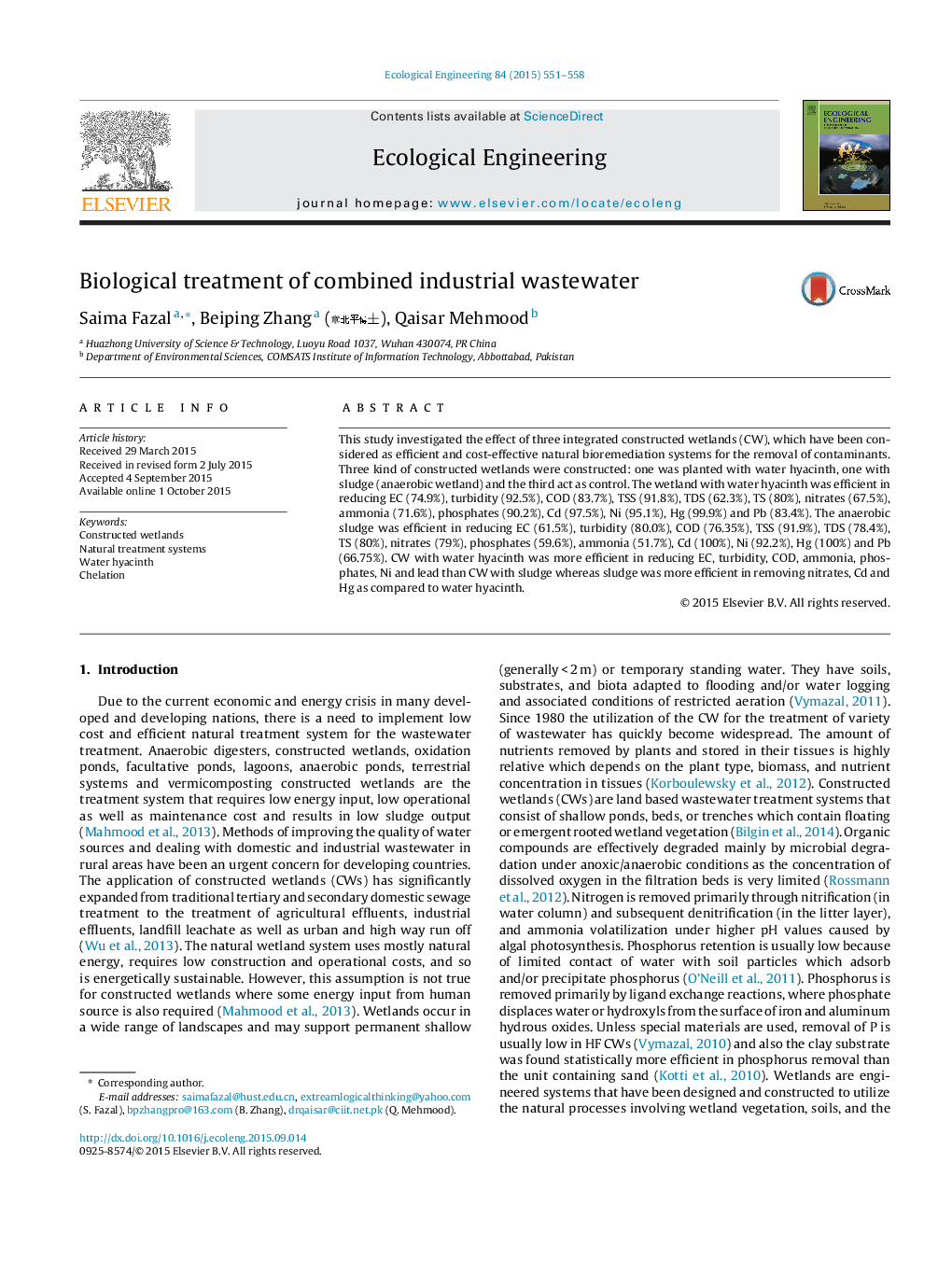| Article ID | Journal | Published Year | Pages | File Type |
|---|---|---|---|---|
| 4388825 | Ecological Engineering | 2015 | 8 Pages |
•Efficiency of three integrated constructed wetlands (water hyacinth, sludge and control).•Compare efficiency of macrophytes and anaerobic bacteria found in sludge.•CW with water hyacinth was more efficient in reducing EC, turbidity, COD, metals.•CW with sludge was more efficient in removing nitrates, Cd and Hg.•Comparison of different kind of constructed wetlands to remove the pollutants.
This study investigated the effect of three integrated constructed wetlands (CW), which have been considered as efficient and cost-effective natural bioremediation systems for the removal of contaminants. Three kind of constructed wetlands were constructed: one was planted with water hyacinth, one with sludge (anaerobic wetland) and the third act as control. The wetland with water hyacinth was efficient in reducing EC (74.9%), turbidity (92.5%), COD (83.7%), TSS (91.8%), TDS (62.3%), TS (80%), nitrates (67.5%), ammonia (71.6%), phosphates (90.2%), Cd (97.5%), Ni (95.1%), Hg (99.9%) and Pb (83.4%). The anaerobic sludge was efficient in reducing EC (61.5%), turbidity (80.0%), COD (76.35%), TSS (91.9%), TDS (78.4%), TS (80%), nitrates (79%), phosphates (59.6%), ammonia (51.7%), Cd (100%), Ni (92.2%), Hg (100%) and Pb (66.75%). CW with water hyacinth was more efficient in reducing EC, turbidity, COD, ammonia, phosphates, Ni and lead than CW with sludge whereas sludge was more efficient in removing nitrates, Cd and Hg as compared to water hyacinth.
